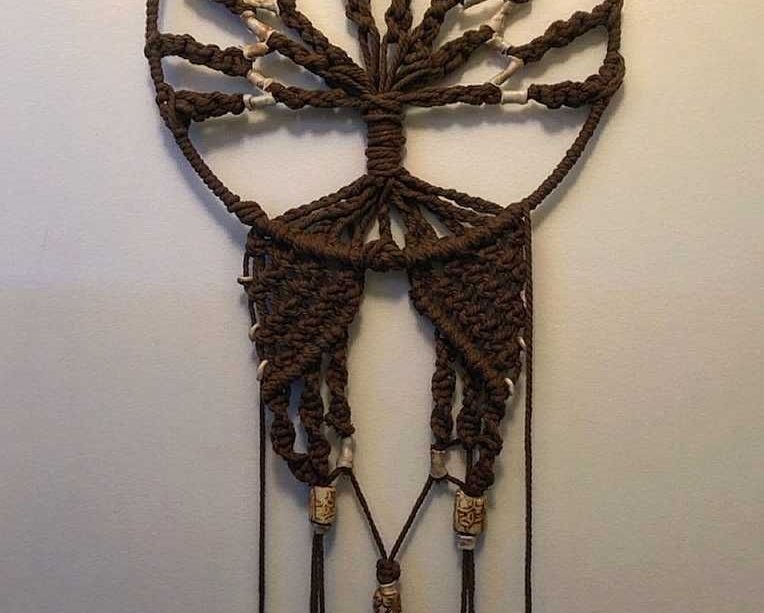The lost art of macramé

the perfect craft for university students
Macramé is considered a lost art to many, but I hope to bring back some of its legacy as I learn to perfect it. It’s the ideal craft for university students, being the cheap alternative to many yarn-related arts.
Macramé is similar to crochet or knitting, but it consists of several unique knots. Macramé is traditionally used for decorative wall hangings, but it is also used for hat holders, plant hangers, belts, and more. Historically, macramé dates back to 13th century Arabs before being passed to European sailors and then to Spain.
It became popular in the Victorian age when royalty would commission macramé artists to create huge, beautiful wall hangings for their palaces. Later, it would make its biggest comeback in the 70s as a fun art fad. Macramé was used for clothes, hangings, towel holders, and anything else you could think of. If you ask people from the 70s, they will tell you that macramé was the big cheese of that time.
Today, macramé has fallen into obscurity, being overtaken by crafts such as knitting and crochet. Its a niche art form, and a year ago I was determined to learn it.
Macramé is, to me, one of the most calming and creative yarn-related arts. The knots are complex and it takes a while to perfect them, but once you do you can create amazing things. I have put a lot of my work into wall hangings, but I’ve done things such as plant hangers as well.
I found as a university student trying to save money that it is a much cheaper alternative to other yarn crafts. You can often find big spools of yarn or cord at Walmart or the dollar store for only $4. That is about the most you’ll need to spend on yarn for about 5 to 7 macramé projects.
For my wall hangings, I often use items such as sticks or paint stirrers to tie them to. You can often find sticks in the park, and you can often get paint stirrers for free if you ask politely for a few at Home Depot. If you have these and your spool of yarn, you are pretty much set to do macramé.
An additional way to cut down costs for macramé is to make your own beads. Macramé beads are often very expensive, and many people use them to give their piece an extra pop of uniqueness. To avoid spending money on beads, I find it easier and cheaper to make my own with polymer clay. What I often do is wrap the clay around the area where I want a bead and that’s it! The clay self-hardens to make a beautiful bead. I prefer using clay because you can make the beads whatever colour you want and whatever shape and thickness you want. You can buy clay at the dollar store for $1.75.
I also love macramé because you can bring it anywhere. I often work on it while riding the bus to campus or waiting for a class. It beats being on your phone any day. I used to worry it would bring unwanted attention, but most people don’t mind or ask you questions. It’s easy to do because you can contain your whole project in your hands, and you don’t need to worry about your yarn falling on the dirty floor.
My advice for anyone beginning macramé is to use online help at first, but avoid using it as a crutch. I learned the majority of knots from free online sources, but I found whenever I tried to copy one already made, it never looked the same. That’s why I encourage people to be creative, make their own unique wall hangings, and just avoid the sad feeling of comparing one’s work to that of someone else.
Overall, macramé is my favourite kind of yarn-related craft. It allows me to be creative and make large and small wall hangings for a low price. I can only hope that soon it will make a resurgence as the perfect kind of craft for university students.










